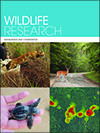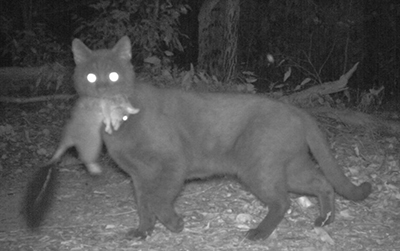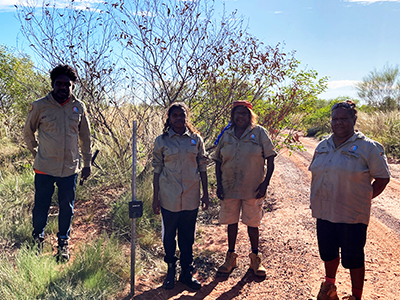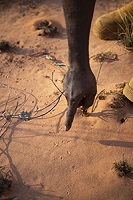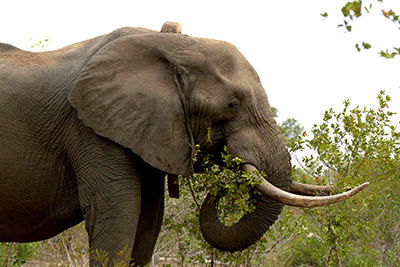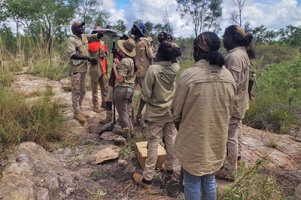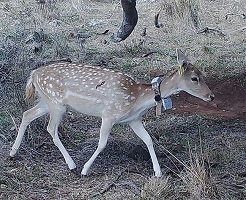Here, we integrate western and Indigenous knowledge to improve our understanding of white-throated grasswren (WTGW) distribution and habitat requirements through habitat-suitability modelling and on-ground surveys. We detected WTGWs at 6 of 39 sites. Indigenous-led fieldwork helped connect people with Country, supported knowledge exchange and active discussions around fire management to protect the species. [Photograph by Warddeken Land Management Limited.]
Bininj kunwok: Ngarridjare ngarrinan kore baleh nawu mayhmayh, kangeyyo yilingkirrkkirr, kabirrini dja kabirriyo, mak kore baleh kabirriredmarnbun. Ngad Bininj dja Balanda wanjh karrirawon kunmayali ba bu karriwernhburrbun kore baleh kunred nawu yilingkirrkkirr mayhmayh kabirridi dja kabirriyo.
Ngad rangers ngarridjare ngarriborlbme ba ngarriwernhburrbun bu ngarrinahnan nahni mayhmayh yilingkirrkkirr ba kabirridarrkiddi munguyh. Ngarri-awani nawu yilingkirrkkirr mayhmayh. Wanjh ngarringalkeng kore six kunred kabirrihdi.
Wanjh bolkkime ngarriburrbun nawu yilingkirrkkirr mayhmayh kabirrihdi kore minj karralkrung munguyh. Bu mahni ngarridurrkmirri, wanjh kamak ba bu ngarridurndeng kore kunred ngadberre, karringurlkmarren kunred dja mayhmayh mak mayh. Dja mak Balanda dja ngad nawu Bininj karrimarneborlbmerren kore karridjarrkdurrkmirri. Dja wanjh karriwokdi karrikarremarnbun bu baleh karriyimuwon bu kunak karriwurlhke, ba bu minj mayh karribun dja kabirridjaldarrkiddi munguyh
The summary spoken in Bininj kunwok is available as an audio file on GoogleDrive [external link].
This article belongs to the collection Indigenous and cross-cultural wildlife research in Australia.


